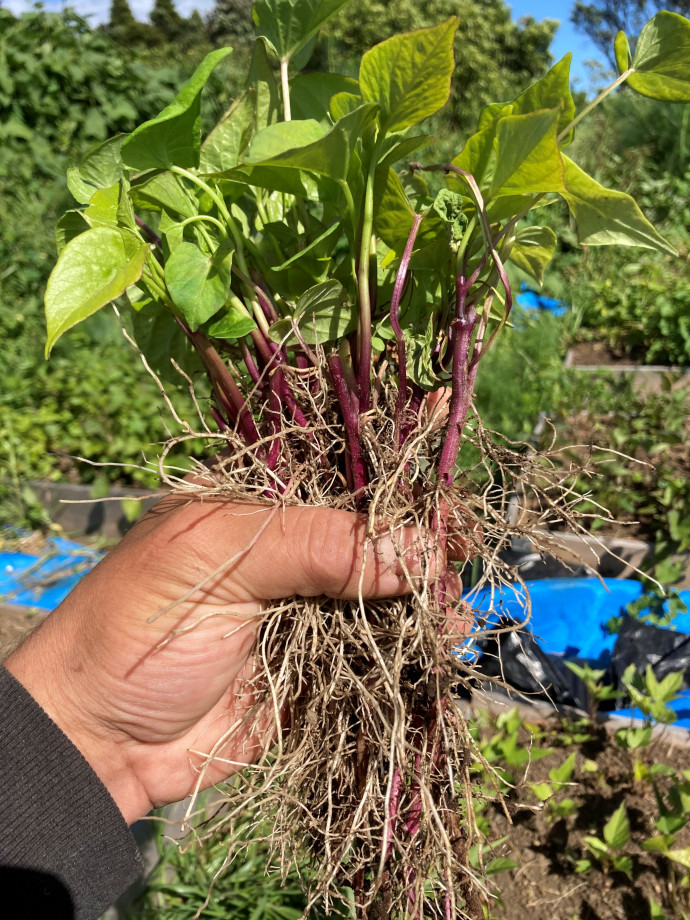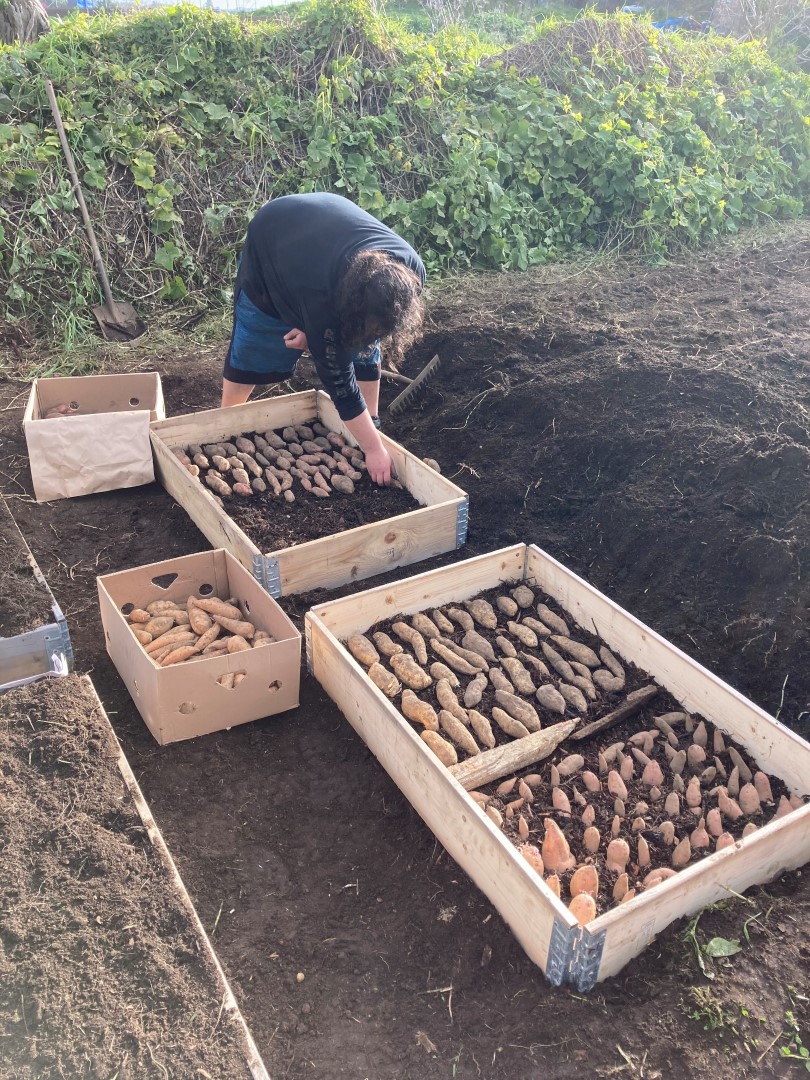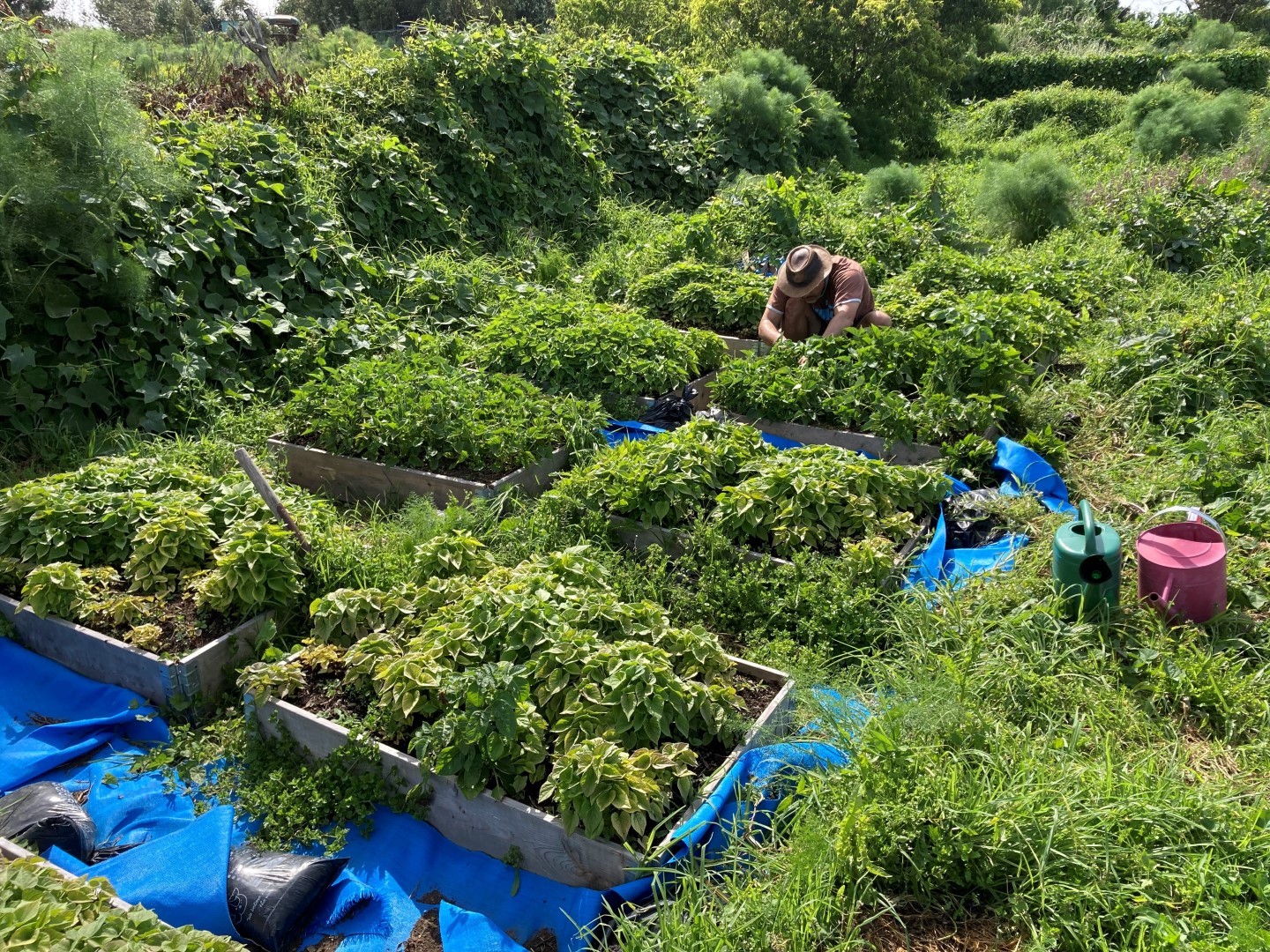News
Published 17 June 2021Pito mata in action - the kūmara connection

Kūmara relates to the name and kaupapa of our wānanga ‘He Pito Mata’ – awakening the potential of early career researchers in Aotearoa, held 17-18 Pipiri June 2021 at Te Wharewaka o Pōneke.
The term ‘He Pito Mata' is taken from the whakatauki ‘Iti noa, he pito mata’, which refers to a small uncooked portion of kūmara that was replanted to produce many more kūmara. From this proverb, the term 'pito mata' is now used to express the notion of potential.
Glen Skipper (Te Ātiawa nui-tonu, Ngāti Rārua, Ngāti Tama) coordinates kūmara gardens at three locations in Taranaki. He is working at reconnecting Māori whānau with heritage varieties of kūmara and traditional growing methods. The different types of kūmara prefer different conditions and nurturing to thrive, come in many colours, shapes and sizes and have different specialities – just like early career researchers! Some kūmara are best eaten by breastfeeding mums or the elderly as they are easy to digest and some are suited for those with diabetes. Kūmara have special rongoā medicinal properties that can keep you well. What a superfood! Glen kindly supplied a collection of these diverse heritage kūmara taonga for us to learn about at the He Pito Mata wānanga.
Pito mata in action! Grow this superfood at home
As the date is mid Pipiri June, we are close to the celestial event of Matariki, which in te ao Māori marks a time of both commemoration and celebration of the trials and triumphs of the previous year, a time also of reflection and hope for the year ahead. Therefore it is also the time to start planning the next kūmara crop or other future endeavours.
If you would like to see the potential of he pito mata in action, try sprouting the kūmara from your conference kete.
Kūmara needs warmth to sprout and these are called tipu. Tipu are what we harvest and replant into the māra to start new kūmara plants. The tipu sprouting bed in some areas is called a pārekereke or tāpapa in others.
To start, lay your seed kūmara in a growing pot or in a deep tray of slightly damp soil or river sand. Place the kūmara with at least 50-100mm sand or soil above and below it. Put it in a warm area and wait for the tipu shoots to grow through. Only after the first tipu starts to break the surface can you start to water sparingly. Leave the tipu to continue growing in a warm sunlit area until the conditions are warm enough to transplant.

Setting out purapura / seed kūmara in a pārekereke 2020
When the soil is at least 18°C and all chances of frost have passed the tipu shoots can be transplanted into the māra garden or into a potato grow bag. Traditionally kūmara were grown in mounds or raised rows. Remember, kūmara love heat and the raised mound will warm up faster than flat ground and will drain away excess rainwater.
To transplant your tipu, cut your tipu 300-400mm long and remove the leaves from the bottom half of the stalk. Gently push the bottom half of the tipu into the ground and pinch the soil around the stalk to give it good contact with the soil.

Harvesting tipu varieties from pārekereke, koanga, 2020, Te Moeone maara, Taranaki
Once the tipu are planted, water around the base stalk area. Do not worry that your tipu does not have any roots attached when planted. Watering around the stalk supports the tipu to produce and form a new root system which it will start to do within a week.
Water the plants occasionally over summer and then harvest them before the first frost, likely in May around most of Aotearoa. Let the kūmara tubers dry in the sun for a few days and then store in a cool dry place.
Did you know you can also eat the kūmara leaves? Use them in place of spinach. Ka rawe!
